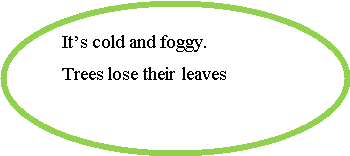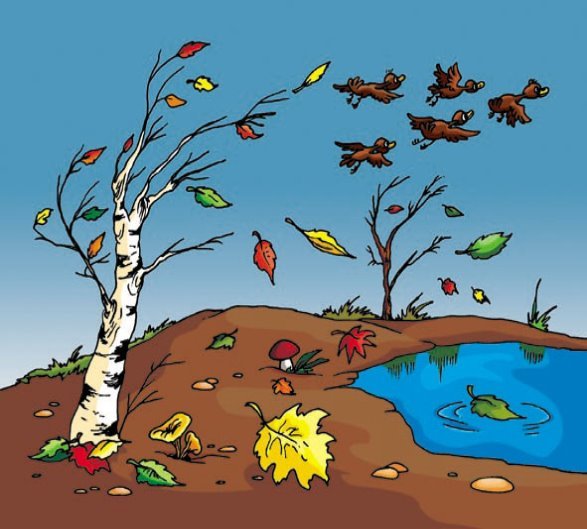Розробка уроку з англійської мови у 5 класі "Weather in Ukraine and Great Britain"
Повторити та активізувати ЛО за темою «Пори року та погода», ознайомити з правилами утворення прислівників, продовжувати вдосконалювати навички читання, усного діалогічного та монологічного мовлення, аудіювання та письма.
![]()
Мета:
навчальна: повторити та активізувати ЛО за темою «Пори року та погода», ознайомити з правилами утворення прислівників, продовжувати вдосконалювати навички читання, усного діалогічного та монологічного мовлення, аудіювання та письма;
розвивальна: розвивати готовність брати участь в іншомовному спілкуванні, розвивати логічне мислення, вміння чітко та ясно будувати своє висловлювання, розвивати мовні та мовленнєві навички, пам’ять, увагу, уяву;
виховна: виховувати інтерес до вивчення іноземної мови, дисциплінованість, толерантність, культуру мовлення.
Обладнання: презентація по темі «Пори року та погода», роздавальний матеріал, наочний матеріал.
Хід уроку
І. Підготовка до сприйняття іншомовного мовлення
1. Привітання
T. Good morning, pupils!
I am glad to see you.
How are you today?
Ps. Good morning, teacher!
We are glad to see you too.
We are fine, thank you.
2. Повідомлення теми та мети уроку.
T. We are continuing speaking about weather. Today we will read and discuss the text, practice your listening, writing and speaking skills, do exercises.
Let’s start our lesson.
3. Перевірка домашнього завдання
4. Уведення в іншомовну атмосферу
T. Children, look at the blackboard and let’s repeat the words about the weather.
- What is the weather like today? Is it ( sunny, frosty, snowy, cloudy, windy, warm, cold, hot, rainy)?
Yes, it is. / No, it is not.
- How many seasons do you know and what are they?
ІІ. Основна частина уроку
- Письмо. Граматичний матеріал. «Перехід іменника в прислівник»
Доповнити речення прислівниками (явищами погоди).
Snowy, sunny, rainy, windy.
- Фізкультхвилинка.
Hands up, hands down,
Hands on the hips, sit down.
Stand up, hands to the sides,
Bend left, bend right.
One, two, three, hop!
One, two, three, stop!
Stand still!
- Робота в групах
Вчитель поділяє клас на дві групи та роздає однаковий набір карток. Завдання учнів – якомога швидше та правильніше виконати завдання.








- Робота з текстом. Читання.
Vocabulary
- changeable ['tʃeɪndʒəbl] — мінливий; непостійний; несталий
- wet [wet] — сирий, мокрий
- nasty ['na:stɪ] — мерзенний; огидний; неприємний
- comparison [kəm'pærɪsn] — порівняння
- remark [rɪ'ma:k] — зауваження; примітка; помітка
- fire ['fаɪə]— камін
- to look forward ['fɔ:wəd] to — із нетерпінням очікувати (чогось)
- fog [fog] — густий туман
- smog [smɔg] — смог, туман з димом
THE WEATHER IN ENGLAND
The weather in England is very changeable. A fine morning can change into a wet afternoon, and a nasty morning can change into a fine afternoon . "Other countries have a climate; in England we have weather".
The English also say that they have three variants of weather: when it rains in the morning, when it rains in the afternoon or when it rains all day long.
The weather is the favourite conversational topic in England. When two Englishmen meet, their first words will be "How are you?" and the next remark is almost certain to be about the weather.
The best time of the year in England is spring (of course, it rains in spring too). The two worst months in Britain are January and February. They are cold, damp and unpleasant. The best place in the world then is at home by the fire.
Summer months are rather cold and there a lot of rainy days. So most people, who look forward to summer holidays, plan to go abroad for the summer, to France or somewhere on the Continent.
The most unpleasant aspects of the weather in England are fog and smog.
Questions:
- How often does it rain in England?
- What is the best time of the year in England?
- What are the worst months in Britain?
- Is summer hot in England?
- What is the most unpleasant aspects of the weather in England?
- Розвиток навичок монологічного мовлення
Вчитель вмикає одну за одною 4 мелодії (4 пори року) . Під певну мелодію з’являється пора року. Діти, почувши мелодію, повинні назвати, яка пора року зараз з’явиться.
P1. Spring.
Spring comes after winter. March, April and May are spring months. In spring the days are long and the nights are short. The birds come back from the South. In March it sometimes snows but in the South we can see the green leaves in the trees and the first flower in the fields. In April and May it is warm. The weather is fine. The sun shines brightly in the blue sky. We can see many beautiful flowers in the parks, gardens and squares. In spring people do not wear warm coats and hats.

P2. Summer.
Summer comes after spring. June, July and August are summer months. In summer the weather is fine. The sun shines brightly in the blue sky. It is hot. The trees are green. The flowers in the parks and garden are white, yellow, blue and red. The days in summer are long and nights are short. In summer people usually wear summer suits and dresses. All the children like summer very much because they have they the longest holidays. In hot summer days they can bathe in the river or in the sea and lie in the sun.

P3. Autumn.
Autumn comes after summer. September, October and November are autumn months. It is cool in autumn. The weather sometimes isn’t fine. The sky is grey. There are clouds in the sky. It often rains and the wind blows. The leaves in the trees are yellow and red. They fall from the trees. The days in autumn are short and it often rains. There is much fruit and vegetables in autumn.

P4. Winter.
Winter comes after autumn. December, January and February are winter months. In winter the weather is frosty. It is very cold. It often snows. There are no leaves in the trees. The streets, the trees and the fields are white with snow. The days are short and the nights are long. In winter people usually wear warm coats and hats. In January children have their winter holidays. In frosty snow weather we can see many children in the parks, gardens and stating rinks. The ski, skate, sledge, play snowballs and make snowmen. Winter is a very nice season. Many people like winter very much.

ІІІ. Заключна частина уроку
1. Домашнє завдання: написати міні-твір про улюблену пору року та намалювати до нього малюнок.
2.Підведення підсумків
T. You have done a lot of exercises today. What tasks did you like? What tasks were difficult / easy for you? What questions have you got?


про публікацію авторської розробки
Додати розробку
